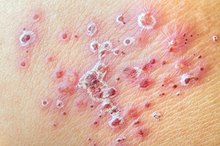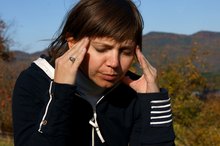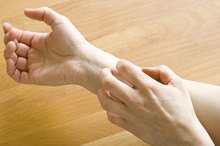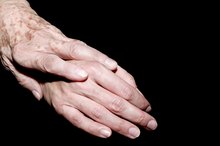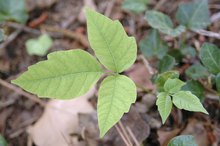Why Are Shingles So Painful at Night?
Shingles strikes 1 million Americans each year, causing mild to severe and even debilitating pain, according to the National Institute of Neurological Disorders and Stroke 1. Six percent to 70 percent of affected patients, NINDS notes, develop a chronic pain syndrome known as post-herpetic neuralgia in which shingles pain persists for months or years after other symptoms subside. In a January 2006 study in the medical journal “Pain,” anesthesiologist Mark Odrcich, MD, explains that a number of explanations have emerged for why shingles becomes so painful at night.
If you are experiencing serious medical symptoms, seek emergency treatment immediately.
Time Frame
Patients with shingles experience pain that worsens throughout the day, peaking around 8 pm when most patients are getting ready for bed, according to Odrcich. The increases are modest, but they are consistent, says Odrcich. Pain medications and antidepressants seem to decrease overall pain, but they don’t affect the pattern of night time exacerbation.
Associated Symptoms
The Side Effects of Shingles in the Elderly
Learn More
Shingles pain produces associated symptoms, such as:
- unintentional weight loss
- sleeplessness
- depression
- disability
- notes NINDS
In a December 2008 report in the “Journal of Pain and Symptom Management,” psychiatrist David A. Fishbain reports that associated symptoms correlate with inadequate night time pain control and pain interference with sleep 4.
Mechanism of Action
Odrcich says scientists aren’t exactly sure why pain due to shingles and similar conditions seems to get worse at night. Several neurotransmitters and endocrine hormones involved in pain perception exhibit diurnal variation, where morning concentrations vary inversely with night concentrations. It’s also seen in depressed and non-depressed patients.
Treatment
Cymbalta's Side Effects on Sleeping
Learn More
In the January-February 2008 edition of “Pain Management,” Pennsylvania State University pain specialist Bruce Nicholson, MD, explains that extended-release pain medications can diminish the perception of night pain due to shingles. For patients who find they wake in the middle of the night because they require additional pain medication, extended-release formulas can also improve sleep by preventing these sleep interruptions. Nicholson specifically recommends tramadol, a generic prescription opioid pain medication.
Prevention
In May 2006, the Food and Drug Administration approved a live virus vaccine, Zostavax, that prevents shingles in up to half of treated patients and significantly reduces pain and postherpetic neuralgia among those who still develop the disease 5. The major side effect of the vaccine is mild injection-site swelling and tenderness, which occurs in up to 48 percent of patients, according to the FDA. However, notes NINDS, the vaccine has only been approved for people older than 60 who have not already had shingles.
Related Articles
References
- “Pain”; Chronobiological Characteristics of Painful Diabetic Neuropathy and Postherpetic Neuralgia; M. Odrcich et al.; Jan. 2006
- “Pain Practice”; Benefits of Extended-Release Opioid Analgesic Formulations in the Treatment of Chronic Pain; B. Nicholson; Jan.-Feb. 2009
- “Journal of Pain and Symptom Management”; Does Pain Mediate the Pain Interference with Sleep Problem in Chronic Pain?; D.A. Fishbain; Dec. 2008
- Food and Drug Administration: Zostavax: Zoster Vaccine Live
- Centers for Disease Control and Prevention. Shingles (Herpes Zoster) Signs & Symptoms.
- Centers for Disease Control and Prevention. Shingles (Herpes Zoster) Signs & Symptoms.
- John AR, Canaday DH. Herpes Zoster in the Older Adult. Infect Dis Clin North Am. 2017;31(4):811-826. doi: 10.1016/j.idc.2017.07.016
- Yun H, Xie F, Baddley JW, Winthrop K, Saag KG, Curtis JR. Longterm Effectiveness of Herpes Zoster Vaccine among Patients with Autoimmune and Inflammatory Diseases. J Rheumatol. 2017;44(7):1083-1087. doi: 10.3899/jrheum.160685
- Cohen KR, Salbu RL, Frank J, Israel I. Presentation and Management of Herpes Zoster (Shingles) in the Geriatric Population. P T. 2013;38(4): 217-224, 227.
- Galetta KM, Gilden D. Zeroing in on zoster: A tale of many disorders produced by one virus. J Neurol Sci. 2015;358(1-2):38-45. doi: 10.1016/j.jns.2015.10.004
- Blank LJ, Polydefkis MJ, Moore RD, Gebo KA. Herpes zoster among persons living with HIV in the current antiretroviral therapy era. J Acquir Immune Defic Syndr. 2012;61(2):203-7. doi: 10.1097/QAI.0b013e318266cd3c
- Mallick-searle T, Snodgrass B, Brant JM. Postherpetic neuralgia: epidemiology, pathophysiology, and pain management pharmacology. J Multidiscip Healthc. 2016;9:447-454. doi: 10.2147/JMDH.S106340
- Johnson RW, Bouhassira D, Kassianos G, Leplège A, Schmader KE, Weinke T. The impact of herpes zoster and post-herpetic neuralgia on quality-of-life. BMC Med. 2010;8:37. doi: 10.1186/1741-7015-8-37
- Sampathkumar P, Drage LA, Martin DP. Herpes zoster (shingles) and postherpetic neuralgia. Mayo Clin Proc. 2009;84(3):274-80.
- Pereira LB. Impetigo - review. An Bras Dermatol. 2014;89(2):293-9. doi: 10.1590/abd1806-4841.20142283
- Gershon AA, Breuer J, Cohen JI, et al. Varicella zoster virus infection. Nat Rev Dis Primers. 2015;1:15016. doi: 10.1038/nrdp.2015.16
- Naveen KN, Pradeep AV, Kumar JS, Hegde SP, Pai VV, Athanikar SB. Herpes zoster affecting all three divisions of trigeminal nerve in an immunocompetent male: a rare presentation. Indian J Dermatol. 2014;59(4):423. doi: 10.4103/0019-5154.135548
- Opstelten W, Zaal MJ. Managing ophthalmic herpes zoster in primary care. BMJ. 2005;331(7509):147-51. doi: 10.1136/bmj.331.7509.147
- Jeon Y, Lee H. Ramsay Hunt syndrome. J Dent Anesth Pain Med. 2018;18(6):333-337. doi: 10.17245/jdapm.2018.18.6.333
- Kim SH, Choi SM, Kim BC, et al. Risk Factors for Aseptic Meningitis in Herpes Zoster Patients. Ann Dermatol. 2017;29(3):283-287. doi: 10.5021/ad.2017.29.3.283
- Saxena A, Khiangte B, Tiewsoh I, Jajoo UN. Herpes zoster encephalitis presenting as multiple cerebral hemorrhages - a rare presentation: a case report. J Med Case Rep. 2013;7:155. doi: 10.1186/1752-1947-7-155
- Teo HK, Chawla M, Kaushik M. A Rare Complication of Herpes Zoster: Segmental Zoster Paresis. Case Rep Med. 2016;2016:7827140. doi: 10.1155/2016/7827140
- American Academy of Dermatology. Cellulitis: Overview.
- American Academy of Ophthalmology. Herpes Zoster Ophthalmicus.
- Centers for Disease Control and Prevention. Shingles (Herpes Zoster): Clinical Overview. Feb 21, 2018.
- Mayo Clinic. Postherpetic Neuralgia. Sept 16, 2015.
Writer Bio
Heather Gloria began writing professionally in 1990. Her work has appeared in several professional and peer-reviewed publications including "Nutrition in Clinical Practice." Gloria earned both a Bachelor of Science in food science and human nutrition from the University of Illinois. She also maintains the "registered dietitian" credential and her professional interests include therapeutic nutrition, preventive medicine and women's health.
